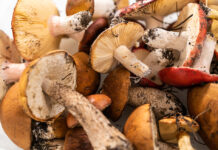
Currently, more than nine million Canadians are living with diabetes or prediabetes. That’s a pretty staggering number in a country with just over 34 million residents.
So what exactly is diabetes? “Diabetes means too much sugar in the blood,” explains naturopathic doctor Sarah Goulding of Nickel Ridge Natural Health in Sudbury, Ontario. “This is dangerous because sugar can damage cells if there’s too much in the bloodstream.” When that happens, people with diabetes can develop nerve damage, blindness, cardiovascular disease, and other dangerous conditions.
THE AMOUNT OF SUGAR IN THE BLOOD IS DETERMINED BY THE AMOUNT OF INSULIN IN THE BODY. INSULIN IS A HORMONE PRODUCED BY THE PANCREAS. PROBLEMS OCCUR WHEN THE PANCREAS IS NOT ABLE TO PRODUCE THE RIGHT AMOUNT OF INSULIN.
THE THREE TYPES
All three types of diabetes involve incorrect levels of insulin:
• Type I, also known as juvenile-onset diabetes, is an autoimmune disease in which the body’s immune system destroys insulin-producing cells in the pancreas.
• Type II, also known as late-onset diabetes, is characterized by insulin resistance and deficiency, and is the most common type of diabetes.
• Gestational diabetes mellitus (GDM), or carbohydrate intolerance, is first diagnosed during pregnancy. While carbohydrate intolerance usually returns to normal after birth, mother and baby are both more likely to develop diabetes later in life.
MEN SUSCEPTIBLE
Men are particularly susceptible to diabetes because they “tend to engage in lifestyle behaviours that slowly damage their pancreatic cells over time, and make choices that reduce their body’s ability to properly metabolize glucose,” says Goulding. “Low levels of HD, the good cholesterol, which is often seen in aging men, is another factor that plays a role. Also, leptin, a hormone derived from fat cells that is involved with appetite and metabolism, is higher in men. It’s been correlated with insulin resistance.”
Lifestyle factors that can increase the probability of a person developing diabetes include poor diet, lack of exercise, smoking, alcohol consumption and poor sleep. Most of us are aware of these risk factors. What many people don’t realize is just how huge a part lifestyle factors play before and after diagnosis.
“The biggest misconception about treating diabetes is the tremendous role of diet and exercise,” says Goulding. “I can’t emphasize enough the beneficial impacts of improving one’s diet and introducing more exercise into the regime. A diet rich in vegetables and berries, high in soluble fibre, and low in animal fats is a good start.”
EMPOWER YOURSELF
In fact, research proves that dietary changes and exercise bring sugar levels back into balance. A health practitioner can help you with diet recommendations.
“I love it when patients with diabetes choose to seek help from a naturopathic doctor because it is actually very simple to reverse in most cases,” concludes Goulding. “Patients find it very empowering to take control of their health and eventually bid farewell to the glucose-regulating medications that they’ve been previously bound to.”











